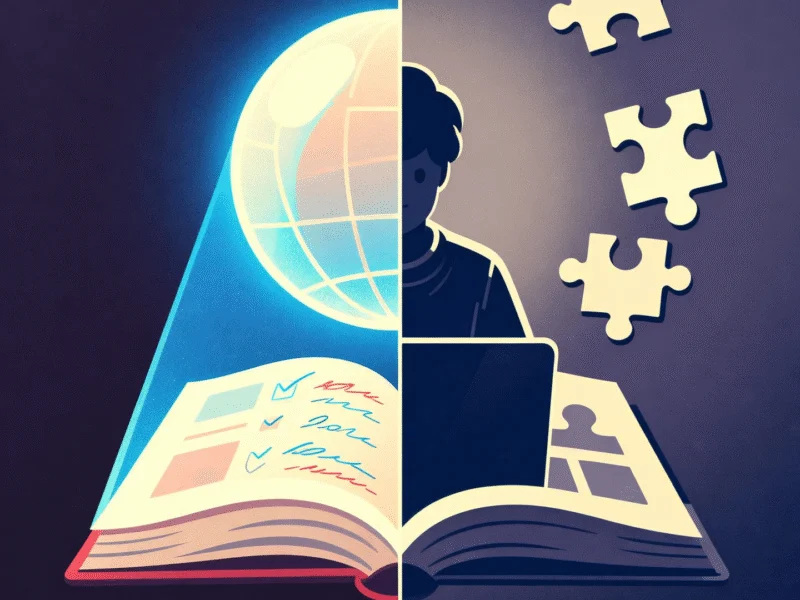For today’s students, artificial intelligence has become as fundamental to learning as textbooks were to previous generations. A comprehensive new study from Oxford University Press provides unprecedented insight into how AI is reshaping education, revealing that eight in ten students aged 13-18 regularly use AI tools for their schoolwork. This transformation represents both remarkable opportunities and significant challenges for the educational landscape in the United Kingdom and beyond.
The AI Learning Revolution: Empowerment and Dependency
The research, conducted with 2,000 students across the UK, demonstrates that AI has become deeply integrated into daily learning practices. An impressive 90% of students reported developing new academic skills through AI tools, ranging from enhanced problem-solving abilities to improved creative thinking and more effective revision techniques. Students described using AI to explain complex mathematical concepts, summarize lengthy texts, and organize their study schedules more efficiently.
One 17-year-old participant captured the transformative potential: “It takes what I say and puts it in an order which makes it easier for others to understand.” This ability to refine and structure thoughts represents a significant advancement in how students can approach complex tasks and communicate their understanding.
The Double-Edged Sword: When Help Becomes Hindrance
Despite the clear benefits, the study reveals a concerning tension between empowerment and dependency. Six in ten students believe AI has negatively affected their learning in some way, with a quarter reporting that it makes schoolwork too easy and 12% feeling it limits their creativity. The dependency issue became particularly clear when one 13-year-old admitted, “It does not allow me to challenge myself,” while another stated simply, “I’m dependent on it now.”
This dependency mirrors concerns in other sectors where technology creates new efficiencies but also new vulnerabilities. Similar to how researchers have exposed critical flaws in Android systems that create security dependencies, educational AI systems require careful implementation to avoid creating learning dependencies that undermine student development.
The Trust Deficit: Students Struggle With AI Literacy
Perhaps the most alarming finding concerns students’ ability to evaluate AI-generated content. Fewer than half of UK pupils can reliably determine when AI-generated information is accurate, with a full third admitting they cannot tell at all. This literacy gap represents a critical challenge for educators, as students may struggle to recognize bias or misinformation when presented with algorithmically confident responses.
Amie Lawless, Secondary Product Director at OUP Education, emphasized the urgency: “The findings remind us how important it is to bring together trusted content, strong learning design, and responsible AI tools that put the learner at the core.” This approach echoes the careful implementation seen in other innovative fields, such as Radiant’s development of nuclear microreactors, where safety and reliability are paramount.
Bridging The Confidence Gap: What Students Want From Teachers
The research reveals a significant disconnect between student AI usage and teacher preparedness. Over half of surveyed students expressed desire for clearer guidance from teachers on when and how to use AI appropriately, while almost one in three doubted their teachers’ confidence with AI tools. This confidence gap creates an educational environment where students are advancing technologically while potentially lacking the critical framework to use these tools effectively.
This situation reflects broader patterns in technology adoption, similar to how financial pressures in healthcare systems can create implementation challenges that require careful management and strategic planning.
Leading By Example: Successful AI Integration in Schools
Some educational institutions are demonstrating how to successfully integrate AI literacy into daily practice. At Bishop Vesey’s Grammar School in Sutton Coldfield, Associate Assistant Headteacher Daniel Williams has implemented a comprehensive approach including assemblies on responsible AI use, staff training through bite-sized professional development sessions, and an internal AI toolkit of prompts and lesson ideas.
Williams observes the same patterns identified in the OUP study: “Students are using AI for creativity and revision but often as a shortcut rather than a learning tool.” His solution involves embedding AI literacy directly into subject teaching, where students learn to critique and edit AI output rather than simply consuming it.
Beyond Copy-Paste: AI as Thinking Partner
The most promising applications of AI in education occur when teachers integrate it as a thinking partner rather than a replacement for learning. This approach encourages students to move beyond the copy-paste temptation and instead engage in questioning, analysis, and intentional creation. As Williams notes, “Education and exam boards need to catch up with the realities of modern learning. Pupils could draft essays using AI at home, then critique and argue against that content in school. That’s deeper learning.”
This balanced approach to innovation reflects the measured progress seen in other sectors, such as LVMH’s strategic growth, where tradition and innovation are carefully balanced to achieve sustainable success.
The Neural Generation: Cognitive Connections With Algorithms
Dr. Erika Galea, co-author of “Generation Alpha in the Classroom,” describes contemporary students as a “neural generation – learners whose cognition is closely connected with algorithms and whose curiosity is influenced by digital code.” This characterization highlights the fundamental shift in how young people process information and develop understanding.
Galea argues that the central challenge isn’t mastering the technology itself, but safeguarding the depth of human thought. The risk lies in developing students who can generate ideas quickly but struggle with reflection, critical analysis, and tolerating uncertainty – essential components of deep learning and intellectual development.
Practical Implementation: OUP’s AI Framework For Schools
The Oxford University Press report provides a practical framework for schools navigating AI integration, emphasizing three core principles:
Be Intentional: Schools should avoid adopting AI simply because it’s trendy. Instead, they should select tools that address specific educational challenges while preserving teachers’ professional judgment and pedagogical expertise.
Build Confidence: This involves appointing AI leadership, providing accessible professional development, and creating feedback mechanisms where both staff and students can reflect on what approaches are most effective.
Prioritize Safety and Privacy: Establishing clear data policies and ensuring transparency about how AI tools operate and use student information is essential for responsible implementation.
The Human Element: Why Teachers Remain Essential
Despite the rapid advancement of AI technology, students consistently emphasize the continued importance of human teachers. As OUP’s Olga Sayer observes, “AI has changed how we learn, but it hasn’t changed why we learn.” Students still value and seek out the feedback, empathy, and personal connection that only human educators can provide.
Alexandra Tomescu, Generative AI Specialist at OUP, frames the challenge clearly: “We should design AI tools with learning principles at their core and pedagogy guiding their purpose.” This approach ensures that technology serves education rather than dictating it.
Looking Forward: AI Literacy as Educational Imperative
If the 2000s focused on digital literacy and the 2010s on media literacy, the 2020s will undoubtedly be defined by AI literacy in educational contexts. The OUP study makes clear that young people want to use AI responsibly but require guidance from adults who understand both the technology’s potential and its limitations.
Teachers don’t need to become AI experts, but they do need to model curiosity, critical thinking, and ethical awareness. The most effective approach combines technological proficiency with the deeply human elements of education: conversation, reflection, and empathy. While machines can generate text and information, only humans can truly portray meaning and foster genuine understanding.
The AI-native generation isn’t asking for perfection from their educators. They’re asking for presence, guidance, and partnership in navigating this new educational landscape where discernment matters more than memorization and critical thinking becomes the most valuable skill of all.



